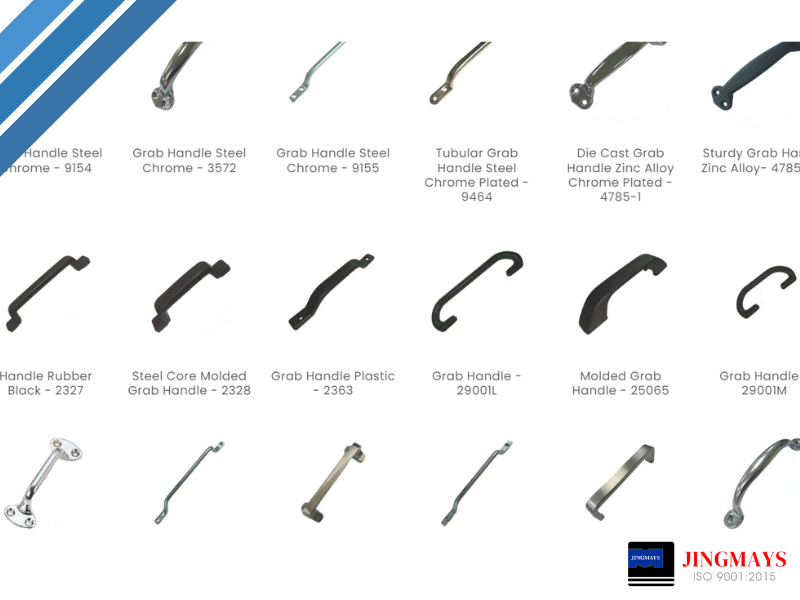Exploring Grab Handles: Materials, Applications, and Jingmays's Versatile Range

Introduction
Grab handles are an essential component in various industries, providing support, stability, and safety across a multitude of applications. As a leading manufacturer, JingMay understands the significance of material choice when designing grab handles. In this article, we will delve into the pros and cons of different materials used in grab handle construction and explore the diverse applications these handles serve.
The Role of Materials in Grab Handles
The choice of material for grab handles is crucial, as it impacts not only the handle's durability but also its performance, aesthetics, and suitability for specific applications. JingMay offers grab handles made from various materials to cater to diverse needs.
Pros and Cons of Different Materials
Stainless Steel
Pros:
- Exceptional Durability: Stainless steel is highly resistant to corrosion, making it ideal for outdoor and marine applications.
- Aesthetic Appeal: Its sleek and modern appearance complements various settings.
- Longevity: Stainless steel handles have a long life span, reducing maintenance costs over time.
Cons:
- Higher Cost: Stainless steel handles may be more expensive upfront compared to some other materials.
- Weight: They can be heavier, which may not be suitable for certain applications.
Aluminum
Pros:
- Lightweight: Aluminum handles are easy to install and transport.
- Corrosion Resistance: While not as robust as stainless steel, aluminum handles still offer good corrosion resistance.
- Cost-Effective: They provide a balance between durability and affordability.
Cons:
- Lower Durability: Aluminum handles may not be as long-lasting as stainless steel in harsh environments.
Plastic
Pros:
- Lightweight: Plastic handles are among the lightest options available.
- Cost-Effective: They are often the most budget-friendly choice.
- Variety: Plastic handles come in various colors and styles, allowing for customization.
Cons:
- Limited Durability: Plastic handles may not withstand heavy loads or extreme conditions as well as metal handles.
- Aesthetic Preference: Some users may prefer the appearance of metal handles.
Applications of Grab Handles
Grab handles are incredibly versatile and find applications in a wide range of industries and settings:
Automotive Industry
Grab handles are vital in vehicles, aiding passengers in getting in and out of cars, buses, and trucks. JingMay's range of materials ensures suitability for various vehicle types.
Public Transportation
Handles in buses, trains, and subways help passengers maintain balance during transit. Lightweight materials like aluminum are often preferred in this context.
Accessibility
Grab bars made of durable materials like stainless steel are crucial in bathrooms and showers for individuals with mobility challenges.
Industrial and Commercial Settings
Factories, warehouses, and construction sites rely on grab handles for worker safety and stability on elevated platforms, ladders, and equipment.
Marine Industry
Stainless steel grab handles are indispensable on boats and ships, offering resistance to corrosion in the harsh marine environment.
Conclusion
The choice of material in grab handle construction is pivotal, as it directly impacts the handle's performance and lifespan. JingMay's comprehensive range of grab handles made from stainless steel, aluminum, and plastic ensures that customers can select the most suitable option for their specific application. Whether it's enhancing accessibility, ensuring passenger safety, or providing stability in industrial settings, grab handles continue to play a crucial role in numerous industries, contributing to safety and convenience.


